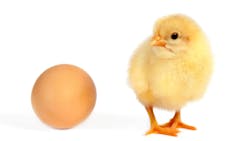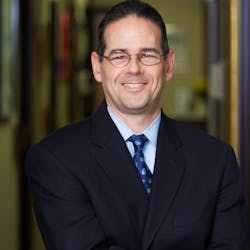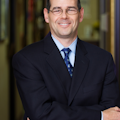Inflammation and biofilm: Which comes first?
We understand that periodontal pathogens in oral biofilm mobilize the inflammatory response, which in turn causes periodontal tissue destruction through the various inflammatory mediators. We also recently understand that it is actually inflammation that selects for the species of bacteria in biofilm, causing dysbiosis.
So, which comes first? Is this a chicken-and-egg question?
Historically, the development of periodontal disease has been illustrated in a linear manner—meaning that one event leads to the next, which leads to the next, and so on. In this model, there is no chicken-and-egg question as the process starts with biofilm. The human body is so complex that a linear disease development process does not commonly occur. The immune system is continuously monitoring and addressing a myriad of insults to the body, such as microbiota, ultraviolet (UV) radiation from the sun, pollen, air, water, and foodborne pathogens and irritants, among many others.
But what if the development of periodontal disease is not linear, but rather cyclical? What if it is an ongoing continuum in which both processes are occurring simultaneously, creating a delicate balance that can be perturbed by a number of factors?
Disease is caused by reciprocally reinforced interactions between polymicrobial communities and the host inflammatory response. Thus, the chicken-and-egg question—whether dysbiosis initiates inflammation or vice versa—is bypassed. In this model, there is an emphasis on the continuous cyclic process in which dysbiosis and inflammation are reciprocally reinforced and constitute the actual driver of periodontitis.1 In other words, both events are occurring simultaneously in a feed-forward loop.
How does this information impact the treatment of periodontal disease? The traditional antibacterial approach of scaling and root planing (SRP) along with home care has not worked out very well. A novel treatment that breaks the destructive cycle likely by targeting the inflammatory response seems logical, because the antimicrobial approach to biofilm has had only limited success and apparently does not interrupt the cycle as evidenced by the high prevalence of periodontal disease. Hopefully it will not be long until we have a truly effective way to reduce the incidence of periodontal disease, finally.
Editor’s note: This article first appeared in Through the Loupes newsletter, a publication of the Endeavor Business Media Dental Group. Read more articles and subscribe to Through the Loupes.
Reference
- Lamont RJ, Koo H, Hajishengallis G. The oral microbiota: dynamic communities and host interactions. Nat Rev Microbiol. 2018;16(12):745-759. doi: 10.1038/s41579-018-0089-x
About the Author
Richard H. Nagelberg, DDS
Richard H. Nagelberg, DDS, has practiced general dentistry in suburban Philadelphia for more than 30 years. He has served on many advisory boards and as a consultant and key opinion leader for a variety of companies and organizations. Dr. Nagelberg is the Director of Medical Affairs at OraPharma, a division of Bausch Health US, LLC. His practice and other professional activities are centered on the impact dental professionals have beyond the oral cavity. Contact Dr. Nagelberg at [email protected].
Updated May 2022


